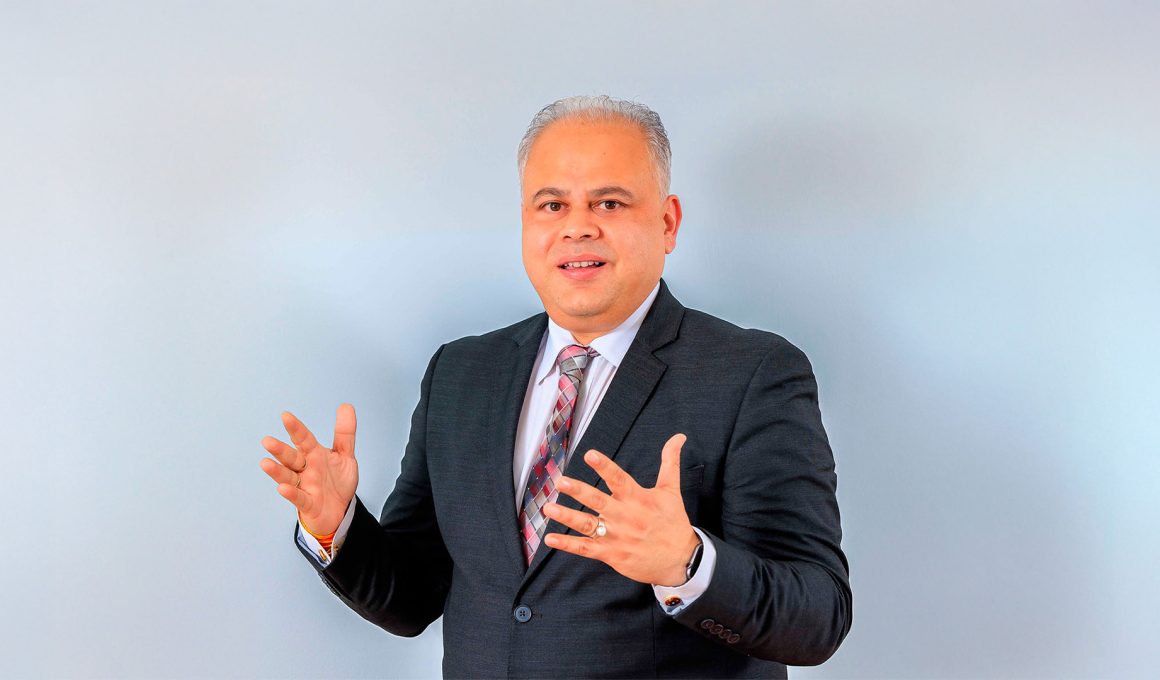When it comes to effective leadership, mindset is the defining factor between simple management and leadership that inspires lasting impact. But what exactly is mindset? For Rahul Karan Sharma, CLO and Founder of Steady Steps LLC, it is the foundation upon which great leadership is built. “A leader’s mindset shapes their perception, their actions, and their decisions — and it directly influences the success of their teams,” explains Sharma. With a background in staffing and learning and development, Sharma has spent years helping both emerging and seasoned executives cultivate the right mindset to unlock their full potential.
The key to effective leadership, he says, lies in a simple shift in perspective: focusing on what you have and how you can use it to contribute to your company and your team. “When someone joins an organization, they often look at what they stand to gain—whether it’s salary, title, or benefits. However, leaders who make a lasting impact are those who shift their mindset from ‘What can I get?’ to ‘What can I contribute?’”
Mindset: “The Cultural Multiplier”
Mindset isn’t just about personal growth; it has the power to shape company culture and business outcomes. While employees contribute to a company’s culture, it is the leaders who define it through their approach to their roles and responsibilities. “For example, if a leader has a pessimistic mindset, eventually their team—no matter how self-motivated they are to begin with—will lose the drive to bring their best to the organization,” Sharma explains. “The risk in this scenario is that the leader, inadvertently, stifles creativity and innovation.”
On the other hand, a leadership mindset that embraces adaptability, trust, and accountability can transform an entire workplace. “Mindset is a cultural multiplier. The way senior executives think about collaboration, problem-solving, and performance influences the entire organization,” says Sharma. “When leaders cultivate a mindset of continuous learning and empowerment, they don’t just inspire individuals; they elevate the collective ambition of the company.”
The Growth Mindset Advantage
Smart decision-making requires diverse perspectives. While many C-suite leaders acknowledge the importance of cognitive diversity, the demands of executive positions often cause them to default to familiar patterns—relying too much on what they already know or focusing on what they don’t know.
One of the most common traps leaders fall into, Sharma says, is believing that reaching a senior position means they no longer need guidance or that they must always have the answers. He argues that mentorship remains essential at every stage of leadership. “Just because you’re a leader does not mean that you don’t need support,“ Sharma emphasizes. “A growth mindset is about expanding how you think. And there are two key ways to do this: actively seek out mentorship and focus your energy on strengths—your own and others’—rather than fixating on limitations.”
He points out a common psychological tendency that can hold leaders back. “Humans tend to believe that others won’t succeed in a given venture if they themselves have failed in it before. But just because something didn’t work for you doesn’t mean it won’t work for someone else. This is where leaders need to challenge their own biases and be open to new approaches.”
Creating a Bench of Leaders
A major gap in many organizations is their approach to leadership succession. Leadership positions are often filled based on tenure or specific technical skills rather than leadership capability. Sharma’s solution? Developing a “bench of leaders”—a proactive approach to building internal leadership pipelines. “A common staffing technique is to maintain ‘benches’ for technical roles, meaning a company keeps highly skilled talent on payroll in anticipation of future needs. Why not do the same for leadership?” he suggests.
Sharma believes that companies that prioritize internal leadership development create stronger, more resilient teams. “If you create a bench of leaders, you foster a culture of entrepreneurship within the organization. You create leaders from within, which goes much further than hiring externally.”
However, developing leadership talent requires intention. “Avoid looking for a ‘mini-me,’” Sharma warns. “Too often, leaders unconsciously seek out successors who mirror their own strengths and thinking patterns. But true leadership development requires identifying individuals whose strengths complement your weaknesses. The key is to spend time with your people, mentor them, and prepare them for leadership—not mold them into replicas of yourself.”
The Mindset Shift Starts with Self-Awareness and Gratitude
“Be curious about what type of leader you are,” urges Sharma. He advises leaders to regularly reflect on their actions, decisions, and emotional responses to gain self-awareness. A simple yet effective practice, he suggests, is reviewing the past week’s work to identify tasks that sparked motivation versus those that were met with resistance. “This reflection will tell you a lot about yourself and your current mindset,” he explains.
If there’s one mindset habit Sharma recommends every leader adopt, it is practicing gratitude. “In the hustle and bustle of business, we rarely appreciate what we already have. We are always looking for what we don’t have, and in that process, we forget to acknowledge our existing strengths—and the strengths of those around us,” he says. Cultivating gratitude, he explains, enhances decision-making by reinforcing self-confidence and allowing leaders to see value in their teams. “When leaders genuinely appreciate their people, it builds trust and motivation across the entire organization.”
Leadership: More Than Management, It’s About Impact
Effective leadership is more than just managing processes—it’s about inspiring people. Leaders can drive growth by empowering others to reach their full potential when they themselves embrace a growth mindset, one that actively seeks out different perspectives and recognizes the assets they have within them and in front of them. “Great leadership starts with a commitment to being curious about how you think and how you can grow,” Sharma says. “It’s not about having all the answers. It’s about being willing to learn while elevating those around you.”
For more insights on effective leadership, you can connect with Rahul Karan Sharma on LinkedIn where he shares best practices for shifting into a growth mindset.








